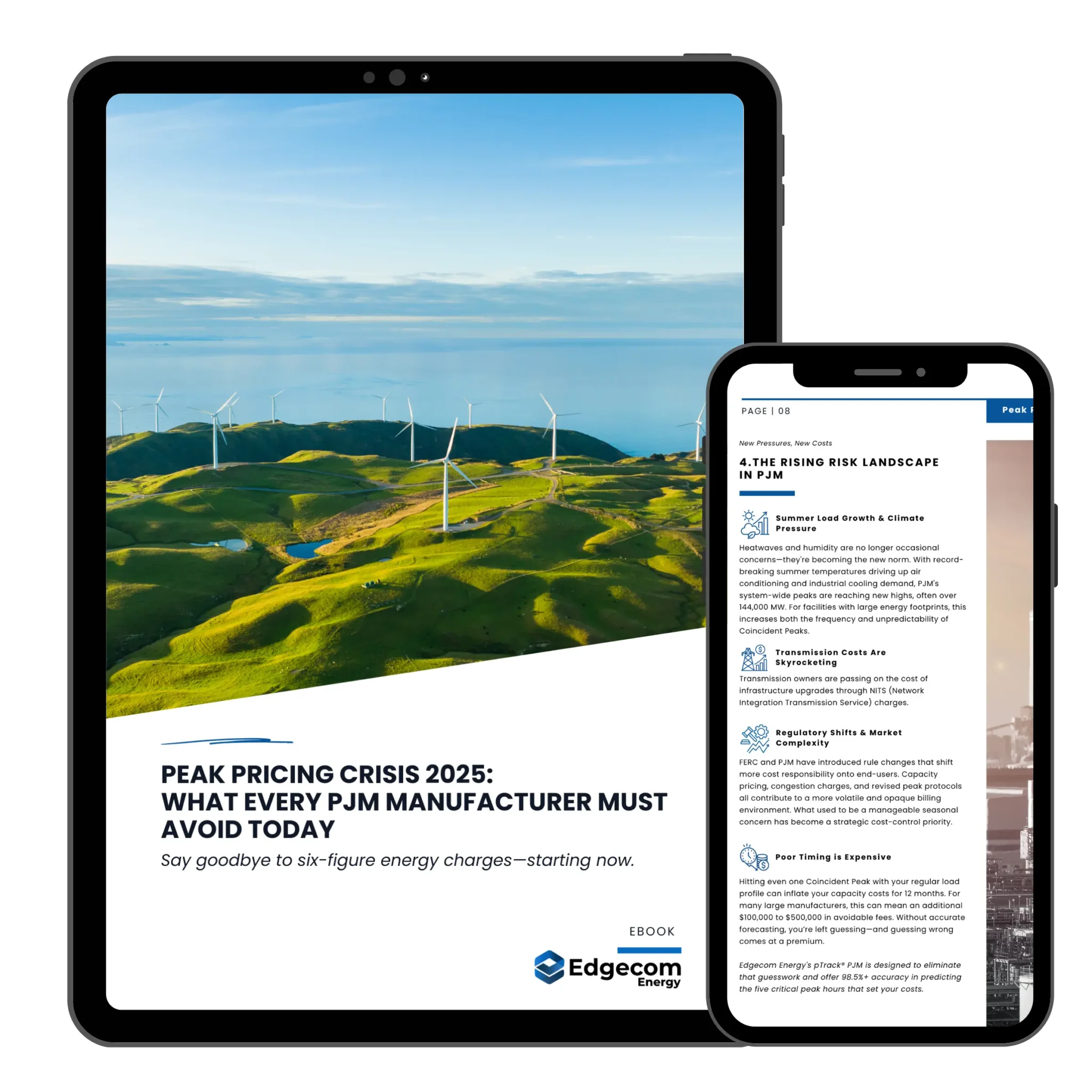
You may have seen your electricity bills mentioning various types of charges based on peaks. If you’re paying for Hourly Ontario Energy Pricing (HOEP), the term could mean something very different to you. For the most part, energy peak demands are basically when, well, the energy demand is at its peak. But there’s a little more to that. Depending on the size of the energy consumption, there could be a significant difference when it comes to the cost, as well as what you can do to reduce your bill.
How do peaks occur?

The Ontario energy grid has a baseload generation from nuclear plants and some hydroelectricity generator plants (as well as coal prior to 2014).These plants are always running, contributing to a significant amount of the provincial energy demand. However, when the demand on the grid exceeds the baseload generation’s capacity, more energy needs to be generated. When the weather is permitting, solar and wind power can assist in energy production, but the more easily controlled power generation comes from hydro electricity dams, or from natural gas plants. This type of plant is known as a peaking power plant, or peaker plants. They only run when the demand for electricity on the grid is high, which leads to the term peak demand.
What qualifies as a peak?
For many large energy users, the grid going into very large peaks would mean liquid natural gas consumption for energy generation, which can lead to a significantly higher Hourly Ontario Energy Pricing (HOEP). This is something that large energy consumers would typically monitor to manage their energy costs and Scope 2 emissions, which are the indirect emissions associated with purchasing electricity and other utilities.
Apart from reducing greenhouse gas emissions, higher energy demand will lead to more stress on the grid infrastructure, leading to more maintenance and upgrade costs. The IESO, who serves as the grid operator in Ontario, wants energy demand to avoid high peaks as much as possible to prevent brownouts or blackouts on the grid. Currently, there are two types of incentives to large Ontario energy users to reduce their consumption during high energy peaks.
The Industrial Conservation Initiative is an incidental peak program that offers significant rebates for some of the largest energy consumers in the province. The customers have to figure out when the peaks will occur, and often plan their consumption ahead of time, leading to a need for peak prediction forecasts. The IESO offers its own public data, but it’s significantly less reliable than the private solutions that many companies can provide (it’s actually how Edgecom started!). If a customer manages to reduce their consumption significantly during the 5 highest peaks throughout the year, they’re paid in the year after their curtailments.
Another method for preventing energy peaks is through a demand response program, named Capacity Auction program in Ontario . This is an opt-in program which many grid operators, including the IESO, to call upon large energy users to reduce consumption when they see the grid is nearing a high peak. This is a much lower payment than the ICI program, but requires no predictions from the customer’s end.
What does peak mean for smaller energy users?
Smaller energy customers who pay using Time of Use pricing are charged differently for their off-peak, mid-peak, and on-peak usage, and the optional Ultra-low Overnight rate starting May 1st, 2023. These on-peak hours don’t always mean that the energy grid is at its highest but is likely higher than the mid-peak and off-peak hours. They are set by the Ontario Energy Board to encourage people to shift their energy consumption times when the energy demand is likely to be lower. The incidental peaks or demand response activation calls can still occur during the “off-peak” hours, but smaller residential and commercial customers will mostly be unaffected.
What can larger energy users do to manage peaks?
There are a few things that large customers can do to mitigate their costs around peaks. The best thing to do is always to significantly reduce their energy consumption but there are also opportunity costs around curtailments.
- Plan operations and maintenance schedules around peaks. Some of our customers have relied on Edgecom’s pTrack® peak predictions to plan their maintenance windows around energy peaks. This ensures that even downtimes are planned ahead of time, and more likely to be profitable.
- Alternative distributed energy sources, such as solar generators or battery energy storage systems could help with the grid’s energy consumption, but not affect operations as much. When paired with a peak prediction service, they can automatically be dispatched to have demand on the grid.
- If neither of the above are viable options, there are still ways to reduce some of parts of operational consumption. Asset-level consumption monitoring would help determine which parts of the operation are the most important, allowing for only the core processes to run while others are reduced.
If you’re interested in any of the above methods for peak management, feel free to reach out with any questions you may have, and our energy consultants will help answer any questions or concerns you may have regarding energy management.
